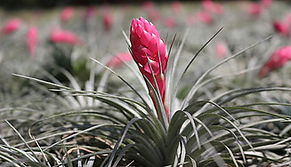Air plants, aka Tillandsia, have a definite life cycle. They have a distinct beginning, middle, and end. Most air plants which are classified as epiphytes (plants which grow on objects without soil), bloom only once in a life span. This type of flowering cycle is called monocarpic. However, they produce offspring called “pups” which will also bloom if given the proper care. Read below and learn more about blooming air plants and the life cycle of Tillandsia plants.
How do Tillandsia Plants Begin – Infant Stage
Every living thing has a beginning and air plants are no exception. They begin by seeds or by offspring called “pups”.
Seeds:
Growing Tillandsia from seed is extremely tedious and time consuming. You may have to wait up to a year for the seed to mature into a nice sized plant.
Seeds will form from an air plant after it has bloomed and been pollinated. After a few months, the pods will burst and produce seeds. Most seeds are brown with a fluffy end. Some seeds will be ready to be placed in a growing medium, but others will appear dry and need to be soaked in water for up to 4 weeks.
Once the pod pops then you can begin the growing process. For more information on how to grow air plants from seeds, refer to How to Grow Air Plants From Seeds.
If you’d like to purchase Tillandsia seeds and not go through the hassle of pollination, purchase them from Amazon: 10 Shy Seeds for Planting-Tillandsia Ionantha and Bromeliad Seeds.
Pups:
Pups are genetic clones of the mother plant. The mother plant produces these after the plant has bloomed. These pups will grow substantially in a few months. This is a much easier way to create a new generation of air plants.
Wait until the pups are at least 1/3 the size of the mother plant before removing them from the mom.
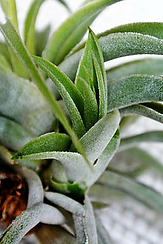
Growth Cycle – Middle Age
Once the air plants are established either from seeds or pups, they will begin to grow into their true form. This could take from months to years depending on the variety of Tillandsia.
Follow the instructions on Care of Air Plants for tips on how to grow air plants indoors. After they have matured, in time they will delight the senses with beautiful blooms.
To encourage pups to grow and produce blooms, you can mist them with a water soluble indoor plant fertilizer once a month.
Check out a variety of pup air plants from Etsy.
Blooming Tillandsia – The Golden Years
The next stage of an air plant growth cycle is the blooming stage, the most beautiful.
Depending on the species of air plant, you can have a delightful bloom, from bright purples and yellows to beautiful pinks and fiery reds.
Be patient. It could take years before your air plant blooms
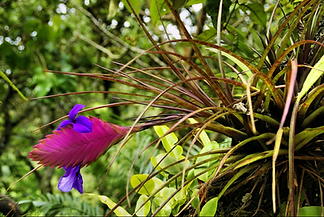
Depending on its variety and given time, you will notice a tract growing from the center of an air plant or a bud forming in the center.
Some varieties will begin to form a blushing color of pink on their leaves before a tract emerges from the center. Others will produce buds in the center of the plant and grow blossoms from there. The buds or tract will continue to develop and produce a large lovely flower. Either by bud or tract, the blooms are a lovely sight to see.
Some species will bloom for a few days, other for a few weeks.
Plants that have a longer bloom cycle usually are produced from larger varieties of air plants such as the caput-medusae and the xerographica. The larger bloom tracts called inflorescence can form on almost a foot long tract. Some unusual varieties of air plants will produce inflorescence that will last up to a year. The inforescence eventually open up to display a beautiful long stemmed flower.
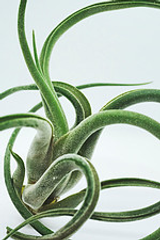
After the Bloom – The Over the Hill Gang
Unfortunately all life comes to an end. However, air plants live on through their “pups”, like children in humans.
After the bloom dies, cut off the stem. This will help produce tiny pups at the sides of the plant. These babies will grow into fully mature air plants. Once they are mature, the life cycle will begin again.
The mother plant will produce from 1 to 3 pups depending on the variety.
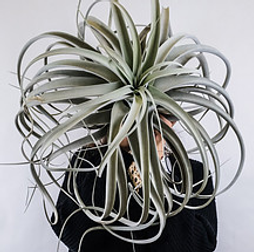
When the pups grow to 1/3 the size of the mother plant, you can either cut them off to have new individual plants or keep them attached to the mother plant to form beautiful clusters.
When the mother plant has given its last energy to nourish its pups, she will turn brown and die. At this point, gently pull her away from her pups and allow the offspring to grow and thrive.
What a beautiful circle of life.
The life span of a Tillandsia is usually between 2 and 5 years depending on the species.
Blooming Air Plants – Life Cycle of Tillandsia Conclusion
Air plants are beautiful additions to your home. They have a unique life cycle. They begin life through a seed or pup, develop into a mature plant, produce a beautiful flower, nurture their offspring, then gently pass away to allow the next generation to take over.
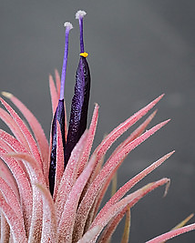
I hope you enjoyed this post. Please leave a comment below. I’d love to hear from you. Also, please share this post and my website with others to learn how to create a lovely garden.
Happy Gardening!
Nina

